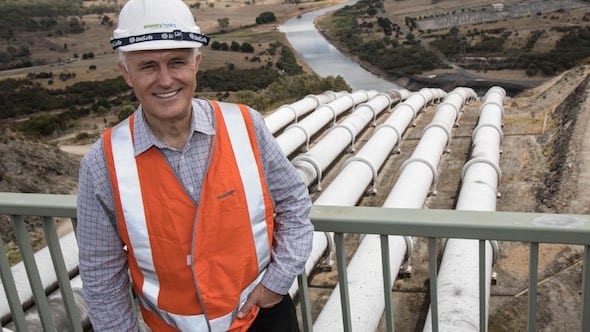This summer has exposed yet another aspect of the fragility of our traditional electricity grid, with several failures in local distribution networks—the so-called ‘poles and wires’.
As former ATA staffer Craig Memery has reminded us in a recent article, the vast majority of power failures—97.2% on Craig’s figures—happen within local networks, with just 0.24% from insufficient generation.
Once again we face a choice between propping up traditional over-built electricity supply infrastructure or driving transformation.
The first involves inefficient capital investment in power lines and equipment capacity used for just a few hours a year; the second involves innovation with confusing options and other risks.
Energy efficiency, demand management, distributed storage, local renewables and new business models all have roles to play (as described in my earlier columns and my article in The Conversation).
The risks seem very different depending on whether you look at the supply or the consumer side of the meter.
The supply side includes generation, wholesale markets, high-voltage long- distance transmission and local networks of poles and wires. The wholesale electricity market is fundamentally about supply and demand. When supply exceeds demand, prices fall and the consumer is king.
When supply is tight, suppliers exploit the situation to maximise profit. Policymakers are frantically trying to develop better mechanisms to reward actions that ‘keep the lights on’, but this is a politically difficult area.
Networks are regulated regional monopolies, but regulation has failed to limit price increases, while network operators have failed to maintain reliable supply in extreme weather.
On the supply side of the meter, the situation is increasingly risky.
Building a large power generator, transmission line or energy storage facility takes time and locks up a lot of capital for years: will there be a long-term revenue stream to repay the cost and provide profit? Will consumers continue to tolerate paying for poor decisions?
On the consumer side, if they were available, innovations such as better-insulated fridges that could keep food cold during a 10- or 20- hour power failure and use smart sensors and controls to maximise use of on-site rooftop solar generation—and in the process use $100 less electricity each year—could be attractive.
An informed, rational business should be keen to buy behind-the-meter technology such as on-site renewable energy, energy storage and efficient, flexible equipment that could keep production going and income flowing for up to an hour during a power failure—and make money at other times by managing demand.
These products are emerging, allowing more businesses and households to invest ‘behind the meter’ to take control of reliability and cost, and as a form of insurance.
Local action looks increasingly attractive when you consider the avoided cost of disruption to business, lifestyle or health, combined with increasingly attractive financial returns, lower climate impacts and the opportunity to ‘send a message’ to the energy industry and governments.
A rapidly growing industry is happy to provide the technologies and services, although consumer protection issues need a lot more attention.
Snowy 2.0: Silver bullet or white elephant?
The proposed Snowy 2.0 pumped hydro storage system provides an interesting example of the dilemmas facing energy investors.
Pumped hydro uses cheap, excess electricity to pump water uphill, then produces electricity at other times as the water runs back downhill through a generator. The environmental credentials of pumped hydro depend on the source of its electricity input, design and environmental impacts on habitats.
To profit, it will rely on the gap between buying at cheap wholesale electricity prices and selling at high prices, after allowing for its large ‘round trip’ energy losses of over 30%, as water flows through a 27 kilometre tunnel between the upper and lower reservoirs.
But the size and frequency of profitable price gaps depend on many factors. If too many energy storage facilities are built before it starts operating or demand response trims peak demand (when prices usually peak), the price gap will close.
If improving energy efficiency drives demand down, it undermines the economics of all supply options by shifting the balance between supply and demand.
Snowy 2.0 won’t be operating until well after the Liddell coal power station closes in 2022, so a lot of new storage and supply capacity and demand-side measures will need to be introduced before then.
That will undermine the viability of Snowy 2.0. Given the rapid growth and declining prices of alternatives, Snowy 2.0 may require big subsidies.
When price peaks are smaller, all generators operating at the time make less money because the most expensive generator running sets the price for all other generators.
So investors on the supply side of the meter face potentially significant and unpredictable financial risks. Projects that can negotiate long- term contracts and be built quickly have the best prospects.
But investing in demand-side modular projects, especially at fringe-of-grid, and packaging high-value services with energy for consumers both look much less risky.
Alan Pears is Senior Industry Fellow at the School of Global Studies, Urban and Social Studies (GUSS) at RMIT University. This article was originally published on Renew Magazine. Reproduced with permission.









